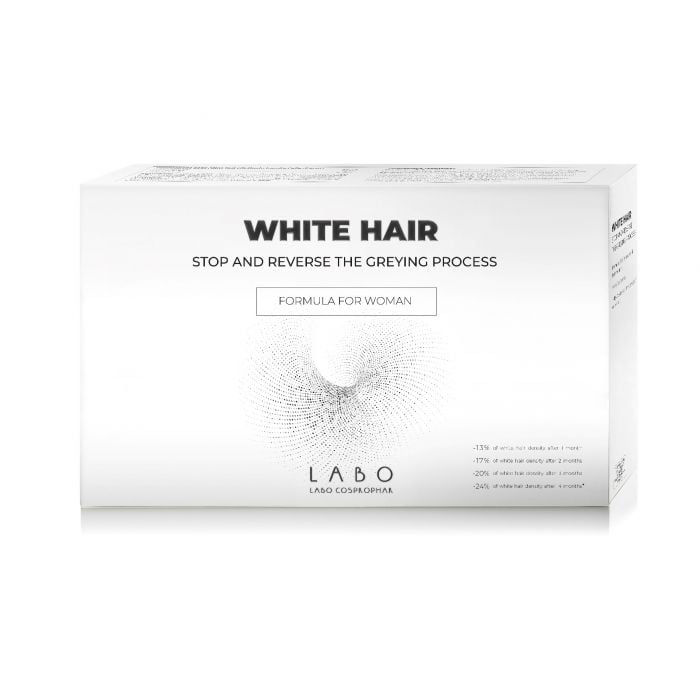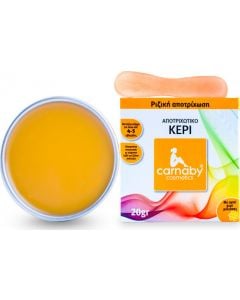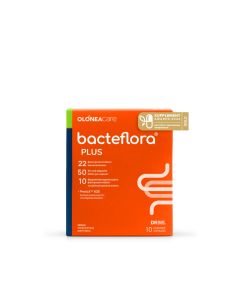The main factors that lay behind the hair greying process are a reduced melanogenesis (decrease in melanin synthesis) and bulb oxidative stress. As we age, our hair undergoes a process of physiological greying that commonly begins in the fourth decade of life, but can take place at a different age depending on individual characteristics.
The greying process relates to a decrease in melanin synthesis, caused by a reduced activity of tyrosinase (the enzyme responsible for melanin synthesis), a decrease in the total number of melanocytes (cells specialized in the production of hair melanin) and, as demonstrated by recent studies, the decrease in hair follicle melanocyte stem cells, another age-related phenomenon.
The accumulation of the oxidative damages within the hair follicles is an important factor, that affects the pace of the hair greying process, resulting from the excessive production of free radicals by our body, which is no longer able to properly dispose of them. This way, they accumulate in the hair bulbs, where their presence causes the enzymes involved in melanin synthesis, and the antioxidant enzymes that naturally protect hair from oxidation, to act less efficaciously. Free radicals can form to a greater extent due to stress, bad lifestyle, poor diets, excessive exposure to sun rays.
Components
The active ingredients that make up White Hair - Stop and Reverse the Greying Process treatment in vials are 3 transdermic technology molecules with tested skin penetration index: they operate at various levels in the hair system (melanocytes, melanosomes, melanocyte stem cells, oxidative reactions) where, on the one hand, they oppose the causes that lead to the formation of white hair and, on the other, they stimulate the melanocytes to produce the natural pigment that distinguishes each type of hair.
Therefore, hair repigmentation occurs without using colouring substances. The melanin
that distinguishes the hair colour of each individual is processed inside the hair system and not supplied from the outside, as in the case of artificial hair colouring.
White Hair - Stop and Reverse the Greying Process treatment in vials is based on an effective mix of 3 active molecules, with very low molecular weights and very high penetration index:
- Labo NPP-23
- Labo SHP-4
- Labo MLN-20
Labo NNP-23 helps promote the natural hair melanogenesis process.
Labo SHP-4 (Synthetic Human Stem Cell Factor) is a growth factor that plays an important role in hair pigmentation by coordinating the reserve cells in the hair follicle.
Labo MLN-20 is a biomimetic peptide that helps counteract the greying process by promoting the recovery of the natural hair colour.
Women risk exposing their hair to food deficiencies and oxidative stress (for example, through permanents and hair colouring) more frequently than men. For this reason, the formulation for women has been enriched with a specific molecule, i.e. folic acid: its lack can affect the hair natural pigmentation, therefore it is useful to counteract the greying process in women.
In order for the functional molecules of White Hair - Stop and Reverse the Greying Process to penetrate the hair system not only through the follicular openings but also through the scalp, Labo researchers developed a “Transdermic” Technology (Swiss Patent CH 711 466) based on the very low molecular weight of the active substances and on the presence of enhancers, thanks to their penetration into the cutaneous layers of the scalp. The percentages reported here above refer to the transdermic penetration of the functional active molecules, in solution, after 24 hours. Transdermic penetration was made possible by the new Labo technology and tested by means of Franz Cells.
Patents
Swiss Patent CH 711 466
Dermo-cosmetic product for topical application with penetration enhancing properties and process for its production.






The information below is required for social login
Sign In
Create New Account